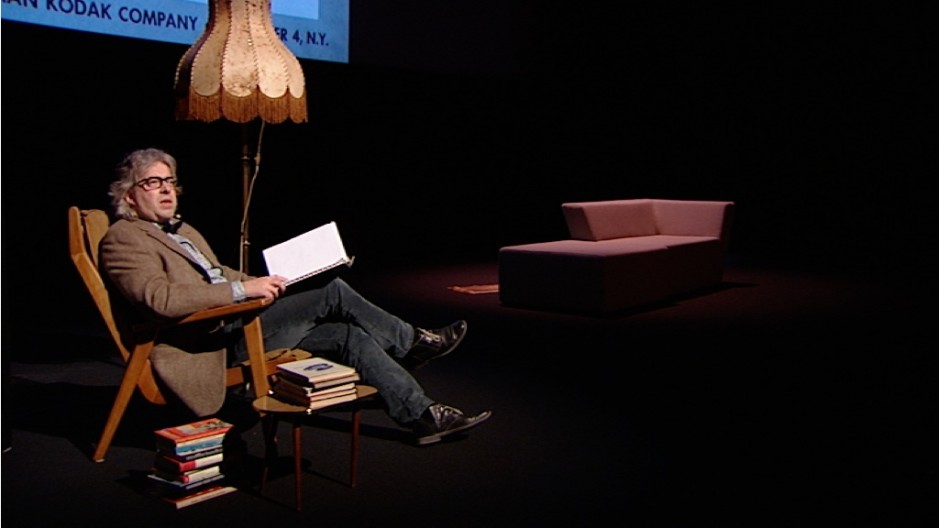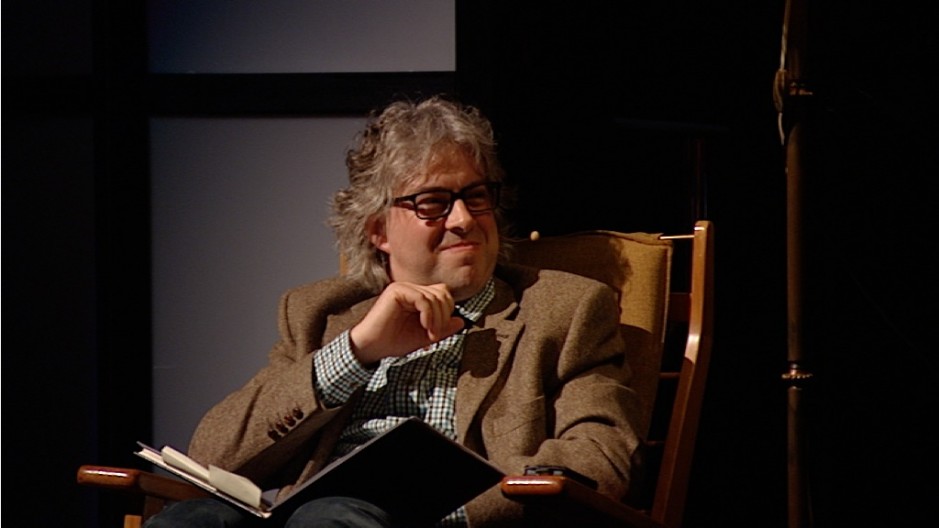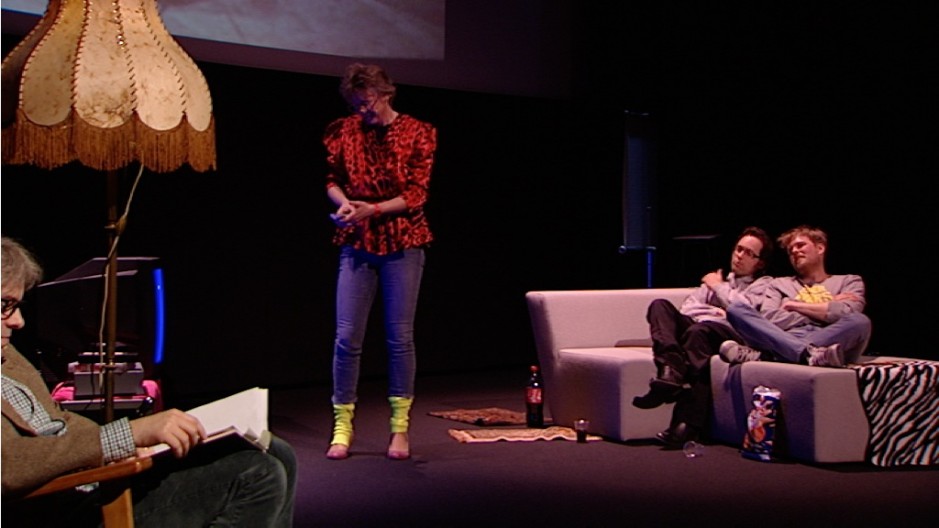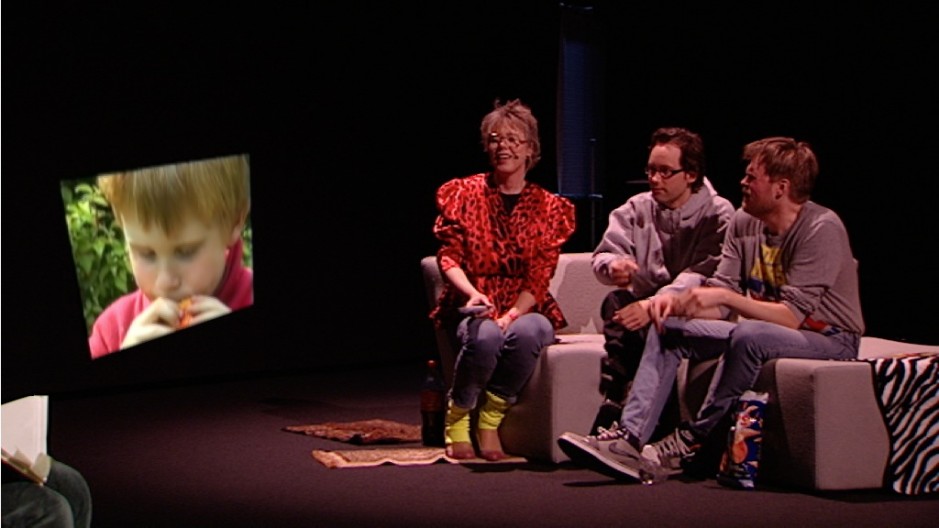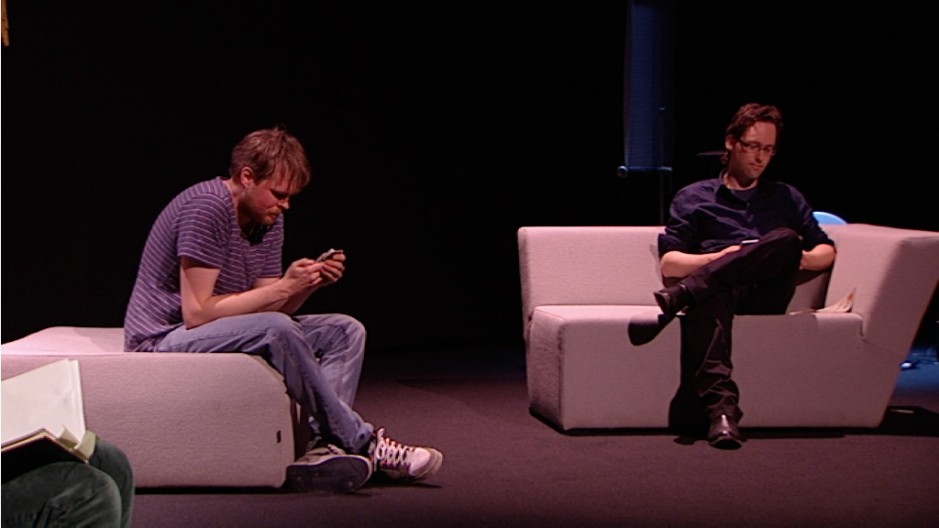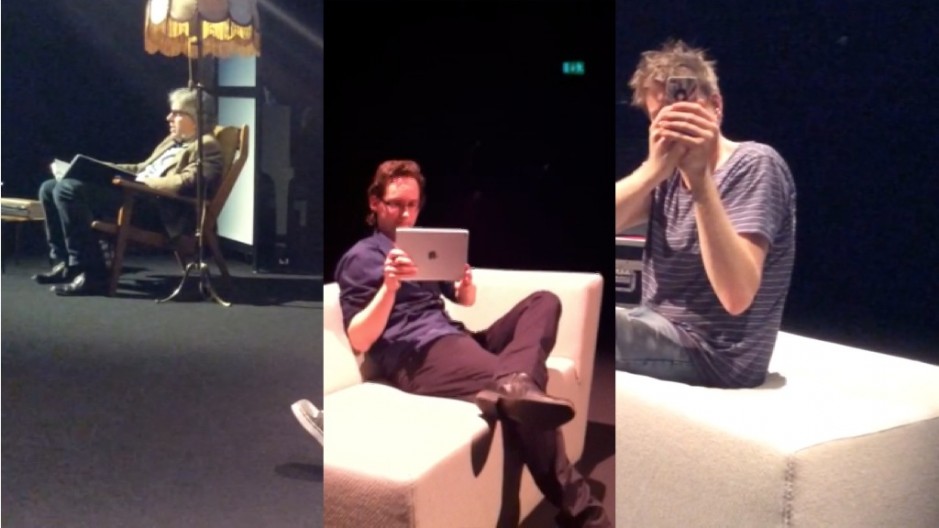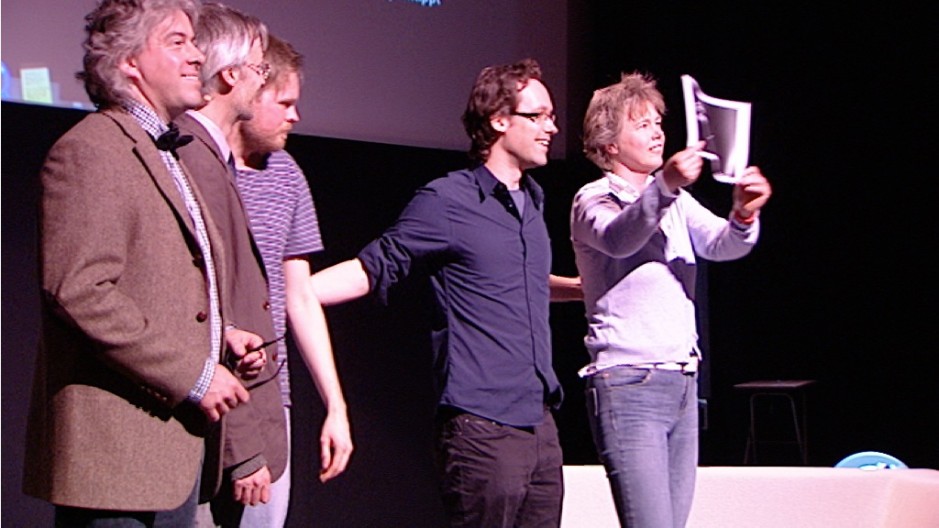“How did people deal with a machine like the projector? What were the social dynamics during this interaction of users with the technology? Who was allowed to handle the thing and who was not? How much experience did you need to have before employing the video recorder? Who were invited to watch the private images? What kind of logistics was needed to make the living room a space for screening movies or videos or iPhone images? What were the rules during the screening? May you talk or not? May you walk or not? May you smoke or not?
With these questions, we – the project team of Changing Platforms of Ritualized Memory Practices – opened up an experiment at the 9th edition of the International Orphan Film Symposium held at the EYE Film Institute in Amsterdam (March 31st, 2014). Instead of giving an academic lecture, we decided on performing how people watched their home movies in different time periods. The experiment directly relates to our research interest to understand how changing technologies of memory production have shaped new practices and rituals of memory staging. Moreover, it was also a try-out of alternative ways of presenting our research project to an international audience.
By means of the experiment we wanted to address the problem that screening practices belong to the more ephemeral moments of family life. They are about watching recorded moments, but they are usually not recorded themselves. They have seldom been materialized in documents. And as they were temporary gatherings or activities, we don’t have access to them anymore. And when, on top of that, the machines of memory production also become obsolete, deep knowledge about them disappears beyond our reach.
That omission brought us to explore a way, a new method that could help us to understand changes in how families screened and watched their own home made imagery. We developed a theatre play, staging three scenes in which we meet a small family called “the Mavericks”. As we meet them in the 1950s, in the 1980s and in the 21stcentury we hoped to be able to explore what is means to watch home movies, home videos and digital videos online. Through these historical re-enactments we were able to capture some of the experiences gone by.
Before you start watching this unique performance, we want to make clear that this was a low budget production, developed in close collaboration with EYE Film Institute, the Groninger Audiovisual Archive (GAVA), Stichting Amateurfilm and the International Orphan Film Symposium organization (based in New York). We did everything ourselves: writing the script, acting and directing (although we had some help from a director). In practical terms, rehearsing was not always easy with two of our project members (Tom and Susan) based in Groningen, Tim in Maastricht, Andreas in Luxemburg and Guy in Amsterdam. Skype turned out to be of great help. We had some professional help in filming the event as well, and afterwards Tim edited the footage all by himself into this 16 minutes documentary.
We hope you enjoy watching our media archaeological experiment.”
Concept & performance: Andreas Fickers, Susan Aasman, Guy Edmonds, Tom Slootweg, Tim van der Heijden
Stage director: Marjan Sonke
Cinematography: Charlotte Storm van ‘s Gravesande
Video montage: Tim van der Heijden
Many thanks to: Jaukje van Wonderen (production assistant), Jo Wachelder (advisor), Facilitair Camerabedrijf Team ENG, support staff EYE Film Institute, Stichting Amateurfilm, Audio Visual Archive Groningen (GAVA).
This blog post was originally written by Dr. Susan Aasman, assistant professor in media history at the University of Groningen. Read her full report, including some reflections on lessons learned, here.




